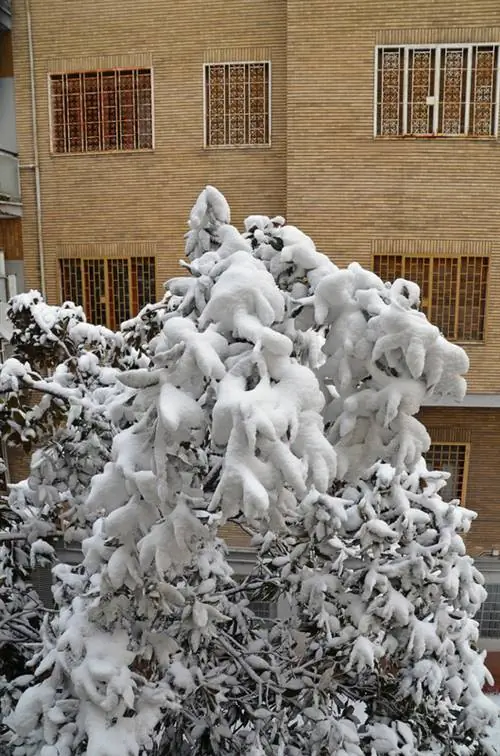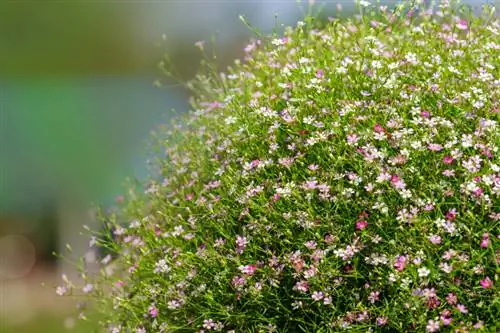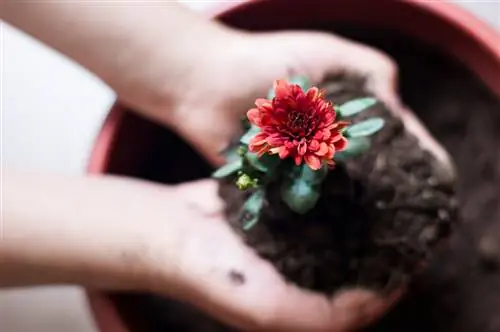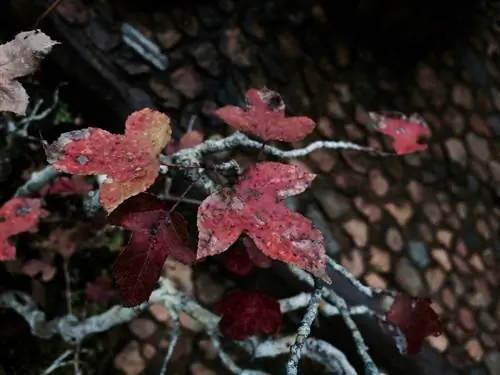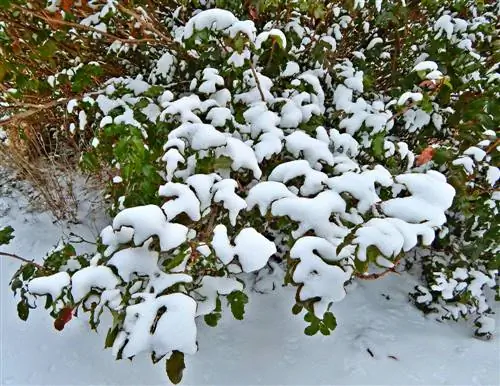- Author admin [email protected].
- Public 2023-12-16 16:46.
- Last modified 2025-01-23 11:20.
General statements about the actual winter hardiness of magnolias cannot in principle be made, as their sensitivity to frost depends on the variety chosen. Basically, the deciduous magnolias are tougher than the evergreens that are used to milder temperatures (e.g. Magnolia grandiflora), although there are also specially bred, more or less winter-resistant variants.
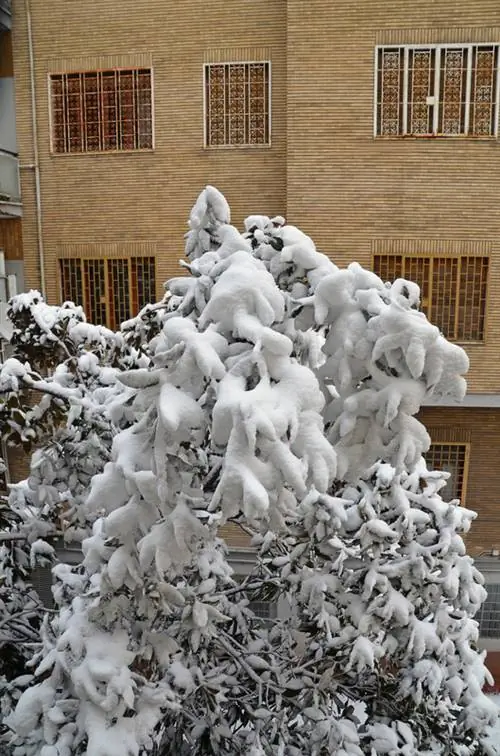
How should you protect magnolias in winter?
To overwinter magnolias, you should protect young plants with fleece or jute and place a layer of mulch around the roots. In spring it is advisable to protect flower buds from late frosts. Potted magnolias require additional protection from cold or cold house conditions.
The older the magnolia, the less sensitive it is
But no matter which variety you have at home, young magnolias should always be wrapped in protective fleece (€34.00 on Amazon) or in jute in winter - both materials are breathable and ensure that the Plants get enough air, but at the same time protect them from the cold. Older trees, on the other hand, get used to the temperatures over time and are therefore less sensitive.
Protect flower buds in spring
The problem with both young and older magnolias is the fact that the different parts of the plant react very differently to frost. The roots, buds and flowers in particular are very sensitive, which is why every magnolia should be protected with a thick layer of mulch over the winter. In early spring you should protect buds and flowers from late frosts, otherwise the magnificent flowers will be ruined.
Tips & Tricks
Due to the fact that their roots can be damaged very quickly by penetrating cold, potted magnolias should always be well wrapped up in winter or kept in cold house conditions (i.e. frost-free, but at a maximum of 10 °C). For deciduous varieties, overwintering in a dark place is also possible.

